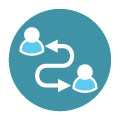
A redirect is when you point one URL to a different URL. From time to time, for various reasons, you may need to create redirects. Perhaps you really need to change the URL structure for your entire website. Or, you have found broken links leading to 404 error pages on your site. Maybe Webmaster tools is showing 404 errors for pages that never even existed on your site. These can come from other websites trying to link to your site and getting the URL wrong. In any of these cases, you will need to create a 301 redirect to point that old URL to the most appropriate new one.
The difference between 301 and 302 redirects
301 redirects are “permanent redirects”. They tell search engines that the page now lives in a new location and because the redirect is “permanent” all PageRank and link juice will flow through that redirect and be credited to the new destination page. A 302 redirect is a “temporary redirect” which indicates that the old URL will be restored, and therefore no PageRank or link juice will flow through a 302. Therefore, the only thing a 302 is good for is burning your link equity. Unless, a page has honestly only temporarily been taken down (which I have never seen happen), then you should not use a 302. Always use 301 redirects.
Redirect Chains
Sometimes a site goes through multiple changes and pages get redirected multiple times. The result can be that a page is 301 redirected to a page that is 301 redirected to a page that is 301 redirected to a page that is 301 redirected to a page that is 301 redirected to a page that is… is your head spinning yet? Yeah, that’s what happens to Google’s spiders. After a few redirects, the spider gets a little dizzy and will just give up and stop following the chain. The problem is that your pages end up not getting indexed. To avoid this, make sure that you don’t create redirect chains. If your page moves multiple times, make sure every old version of the page is redirected, just once, to the new version of the page.
SSL Use
SSL is recommended for all sites. With more and more hacking issues and security threats gaining headlines, Google’s head of web spam Matt Cutts has said that he would love to make site-wide SSL a part of their algorithm because secure sites are more trust worthy than non-secure sites. While this is supposedly not yet a part of Google’s ranking algorithm, it seems like the writing is on the wall that it will be at some point. Currently having an SSL certificate applied to every page of your site causes no harm to Google’s ability to crawl your site, as long as it is implemented correctly. Just remember to redirect the http version of your site to the https version of your site, and you will be golden. The one caveat here is that SSL is tricky for sites that are hosted on shared servers.
Global Navigation
In the course Site Architecture and Navigation, we discussed in detail most of the best practices for properly structuring navigation. However, there are just a few technical things to keep in mind about the technical aspects of your Global Navigation.
- Be careful about building out massive Global Navigation menus. These can slow down the loading of the page and you should try not to have more than 100 links per page, unless your site is a massive brand, with tons of backlinks and driving huge amounts of traffic. For such large sites, having 200+ links is acceptable, on top pages such as the homepage or top category pages.
- If using drop down menus. Load your drop down link content before loading the Javascript that supports it. This will speed up page loading time and make sure that search engines can actually see your links (search engines are fairly blind when it comes to JavaScript).
Filtered Navigation
Filtered navigation can be very helpful to users, especially on sites with an overwhelmingly large selection. Typically this is provided in a sub-navigation for specific sections. Filtered navigation allows visitors to specific exactly what types of things they are looking for through a set of criteria such as brands, sex, size, color, price, etc… The problem with this type of navigation is that, due to the number of potential options, it can create thousands or even millions of possible results pages, and many of those will contain mostly duplicate content. If search engines index these pages, it can really hurt your rankings. So, how can you deal with the duplication content issue? There are a few ways to address this problem, but one way is vastly superior…
Don’t Index Filtered Pages
You can easily achieve this by putting a hashtag (#) before the filter query parameters in the URL. Search engines ignore anything that comes after a hashtag in a URL so the following example:
www.example.com/category/sub-category#size=L&price=25&sort=lowest&page=1
Will look like this to search engines:
www.example.com/category/sub-category
The great thing about this is that any links that may ever point to the filtered URL, will be credited to the unfiltered URL, helping it rank better. However, if you find that a particular filter is very popular, you should consider giving that filter it’s own category page.
Now You Know How, When and Why to Use
Redirects For SEO!
Next In the next lesson we will take a look at how to increase the PageSpeed of your website. It is critical to the user experience and increasingly important for SEO that your webpages load fast on all devices and over all connections.
So, let’s jump in and increase your
